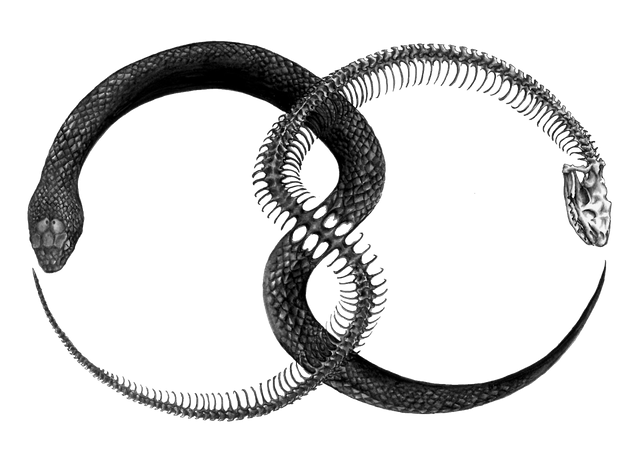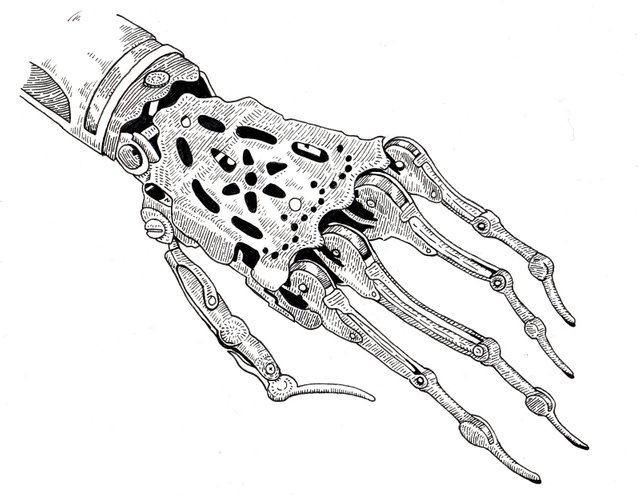
Psychoanalytic Fundamentals
Freud: Eros & Thanatos
Sigmund Freud first identified Eros in an essay called “The Pleasure Principle” (1900). A quarter century later he described a second psychical phenomenon which he called Thanatos in the essay “Beyond The Pleasure Principle” (1925). Together these two driving forces presented a more complete image of what motivates people to action, thought, and feeling. Freud pictured these two forces as direct opposites; when one is waxing the other is waning, when one is in ebb the other is in flow. This diametrical opposition, whilst seemingly true at face value, is in my opinion an over-simplification. The human experience is not so black and white. Our emotions can pull us in many directions at once. A simple either-or logic circuit is inadequate in describing, or explaining the human condition. This is not to say the theory is worthless, quite the contrary. Freud’s theory of Eros and Thanatos is one of psychoanalysis’ greatest assets.
In their most condensed forms Eros is ‘the drive to life’; whereas Thanatos is ‘the drive to death’. Eros, named after the Greek Goddess of love, motivates people to seek out joy, happiness, companionship, intimacy and all that is good in life. Thanatos, named after the Greek God of death, is what sends people into the jaws of misery, sadness, solitude, and loneliness. Much of human, and indeed animal, activity is driven towards pleasure. People eat because food is delicious to the palette. This basic necessity of life can be explained using the pleasure principle of Eros. Another essential aspect of animal existence is procreation; and sex can be an undeniably pleasurable thing. Yet Eros cannot explain all of human behaviour. Much of what people do causes them harm. On the darkest end of the spectrum is suicide, the most literal expression of Thanatos. People perform all sorts of self-destruction: sick people ignore their own well-being all too often. It is a well observed fact that people suffering from depression will bathe and brush their teeth less frequently; they will ignore hunger and avoid food, they will cut their skin until it bleeds and scars. There is no pleasure to be found here.

In this light, the interactions of Eros and Thanatos can be represented by the ancient symbol of the Ouroboros. Two snakes, each eating the tail of the other. The Western equivalent of the Yin-Yang. This is not a static symbol, and it is very possible for one snake to outgrow the other. For example, as the snake of life consumes the tail of death it grows in size as the other diminishes. For Freud this would be the general state of all healthy people. Death is in retrograde for a happy, well-adjusted person. But can this idea truly express the complexity of an emotionally mature adult? To find out we turn our attention from snakes to wolves.
In Native American oral traditions there is a parable about two wolves. There is a white wolf and a black wolf. The white wolf is analogous to Eros and the black to Thanatos. These two wolves, both equal in size, strength and, cunning; are in perpetual combat. Neither wolf can gain the upper hand on the other, but one must come out on top. Which ones wins? The wolf that is fed the most will triumph. In this metaphor the strength of one wolf is independent of the weakness in the other. Yes, their relative size and strength will change but the smaller of the two will never shrink away. A person who pursues life’s goodness and joys will do so with a strong white wolf at their side; but will still be accompanied by the black. The black wolf may not howl as loudly as the white, or bite as ferociously but it is forever present. In this way the metaphor of the wolves is more nuanced than that of the snakes. It more accurately is able to cover the complexity of emotional maturity.
In truth, a healthy person respects both Eros and Thanatos. In reality, a person who strove only ever towards merriment could never be a mature adult. The material realities of life mean that if we only ever play then no work will ever be accomplished; if we only ever dance then when will we rest? There must always be a fine balance, and the appearance of this balance can be difficult to recognise at times. Take for example, the phenomenon of BDSM (Bondage, Domination, and Sado-Masochism). BDSM is by most reports the most common sexual fetish in the world. Sexual acts ranging from tickling, light spanking, choking all the way through to whips and chains fall under the umbrella of BDSM. These acts during sex between two (or more) consenting adults is not only normal, but healthy. BDSM is a true recognition of what the other wants and an attempt at making that desire come true, despite any difficult feelings that come along with it. There is pleasure in responsibly approaching the desires of another. BDSM is at its heart a leap of faith; trust that the other will not go too far. Belief that your desires are being taken care of. BDSM is the equivalent of walking closer to the black wolf, looking it in the eye and thanking it. Thanking it for the opportunity to feel all the joys that the white can offer.
Eros could never look so beautiful were Thanatos not so terrible to behold. Pleasure could never be so sweet, were our miseries not so deep. To embrace life is to shake hands with death.
Stay in touch, @pleaseignore.

Congratulations @pleaseignore! You received a personal award!
Click here to view your Board
Downvoting a post can decrease pending rewards and make it less visible. Common reasons:
Submit
Congratulations @pleaseignore! You received a personal award!
You can view your badges on your Steem Board and compare to others on the Steem Ranking
Vote for @Steemitboard as a witness to get one more award and increased upvotes!
Downvoting a post can decrease pending rewards and make it less visible. Common reasons:
Submit